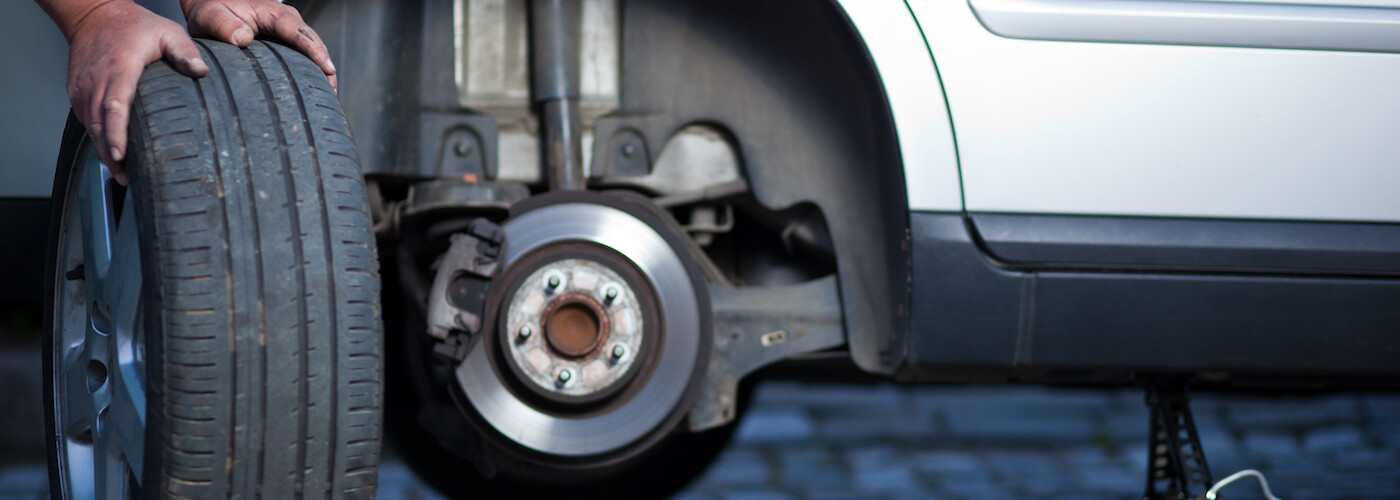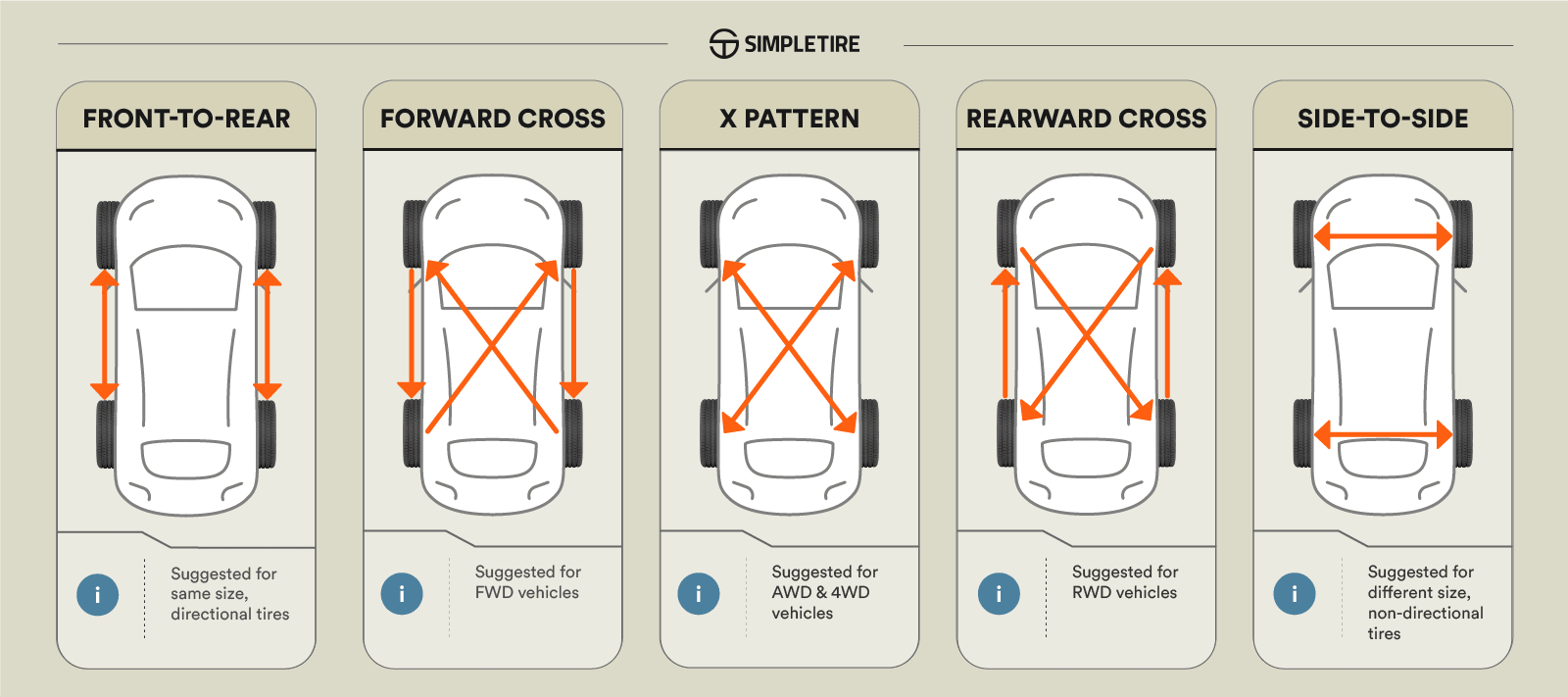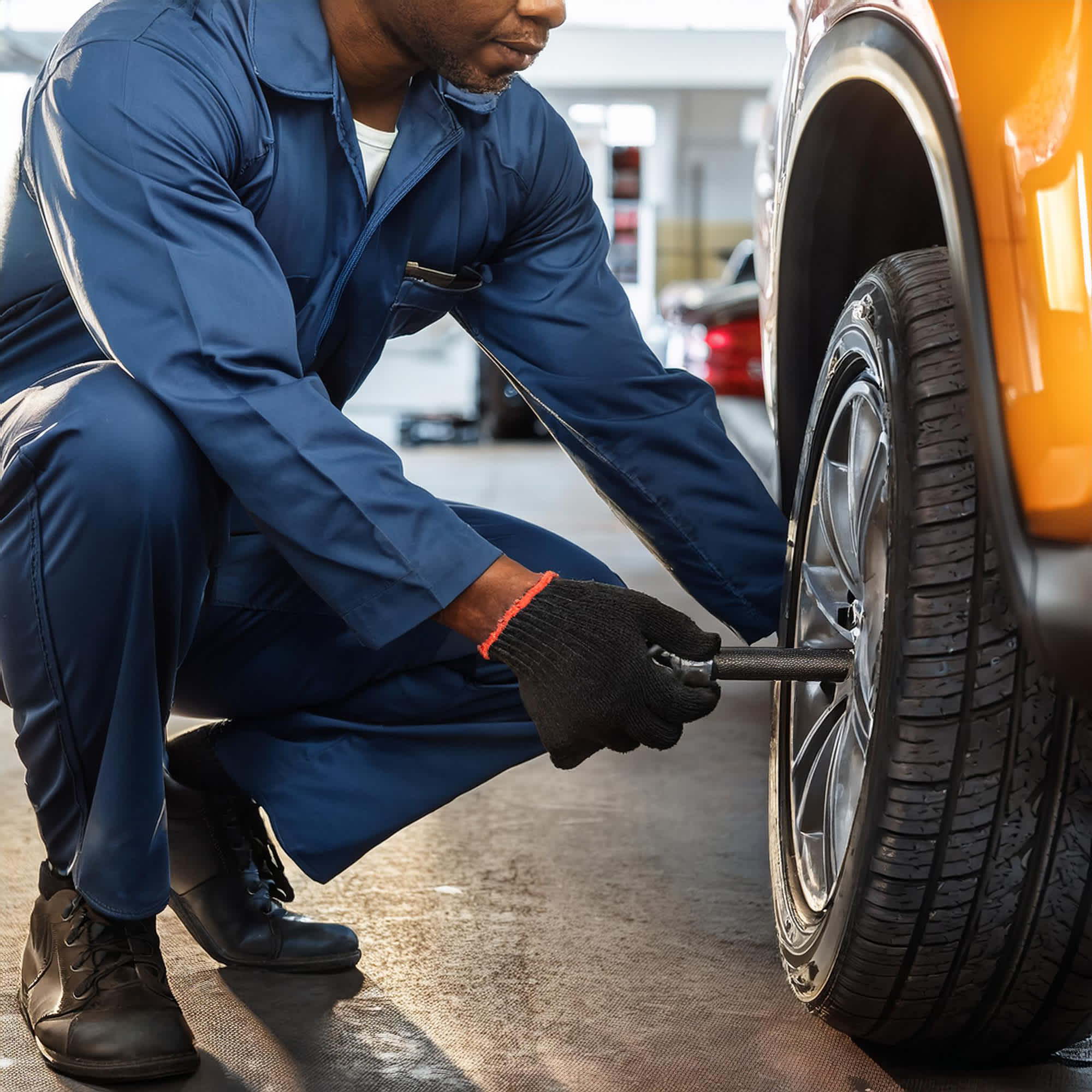Tire Maintenance & Safety
Best price guarantee
Tire replacement coverage
24/7 roadside assistance
Easy returns

Tire rotation is a crucial part of vehicle maintenance that is often overlooked. However, regularly rotating your tires can significantly improve their performance and longevity.
Proper tire rotation involves moving tires to different positions on the vehicle according to a specific pattern. This practice helps ensure even tire wear, maintains balanced handling, and extends the life of your tires.
Understanding the correct tire rotation pattern for your vehicle is essential for optimal tire health. The appropriate pattern depends on factors such as your vehicle's drivetrain configuration and tire type.
What is a tire rotation?
Tire rotation is the practice of periodically changing the position of each tire on your vehicle. This typically involves moving the front tires to the rear and the rear tires to the front, sometimes also switching them from one side of the vehicle to the other.
The primary goal of tire rotation is to promote even tire wear. Since tires at different positions on the vehicle are subject to varying forces and loads, they tend to wear at different rates. For example:
- Front tires often bear more weight due to the engine and transmission, leading to faster wear.
- Rear tires on front-wheel drive vehicles may develop a "cupped" wear pattern due to the weight of the vehicle and its suspension design.
- Tires on the drive axle (front for front-wheel drive, rear for rear-wheel drive) experience more wear due to the forces of acceleration, braking, and cornering.
By rotating tires regularly, you can minimize these uneven wear patterns and extend the overall life of your tire set. This practice also helps maintain balanced handling and traction, as tires with similar tread depths will provide more consistent performance.
It's important to note that tire rotation is typically required to keep tire warranties valid. Manufacturers often stipulate regular rotations as part of their warranty terms, as it demonstrates proper tire maintenance and helps prevent premature wear.
Why is tire rotation important?
Tire rotation is essential for preserving your vehicle's overall safety and efficiency. By systematically changing the position of your tires, you help them wear evenly, which enhances the vehicle's performance. When tires wear consistently, it reduces the risk of vibration or noise, contributing to a smoother ride.
Regular rotation also minimizes the chance of premature or uneven tire wear. Front tires on vehicles often face more stress from steering and braking forces. By shifting their positions, you ensure that each tire gets an equal opportunity to carry the vehicle's load, maximizing their lifespan. This process not only extends the service life of your tires but also optimizes fuel consumption, as evenly worn tires reduce rolling resistance.
Moreover, maintaining similar tread depths is vital for vehicle stability. Consistent tire wear ensures predictable handling during cornering and braking, which is particularly important in wet or icy conditions. Many manufacturers specify regular rotation as part of their warranty conditions, underscoring its importance. By keeping up with rotations, you align with these requirements and facilitate the process of replacing all four tires simultaneously when necessary, ensuring uniform performance across the set.
How often should you rotate your tires?
The timing for tire rotation varies based on several factors, including your vehicle type, driving conditions, and the manufacturer's guidelines. Typically, rotating tires every 5,000 to 7,500 miles is a standard practice. This interval conveniently matches the schedule for routine maintenance tasks like oil changes.
It's important to refer to your vehicle's owner's manual for specific instructions regarding tire rotation. Manufacturers may have distinct recommendations tailored to your vehicle's design and usage. Following these instructions ensures your tires are maintained correctly for peak performance and durability.
Vehicles that venture into tough terrains or have specialized tread patterns, such as off-road or performance tires, might necessitate more frequent rotations. These driving conditions can cause uneven tread wear, making regular rotations essential to balance wear patterns and extend the life of your tires.
Tire rotation patterns for front-wheel drive vehicles

Front-wheel drive vehicles require specific rotation patterns to address the unique wear patterns associated with their drivetrain. The front tires handle the majority of the vehicle's power and steering forces, leading to faster wear compared to the rear tires. Implementing the right rotation pattern helps distribute wear evenly across all tires, enhancing their longevity and vehicle performance.
Forward cross pattern
In the forward cross pattern, the front tires are repositioned directly to the rear axle without switching sides. Meanwhile, the rear tires are moved forward, crossing over to the opposite front positions. This means the left rear tire shifts to the front right, and the right rear tire moves to the front left. This pattern is particularly effective for maintaining an even wear balance, making it suitable for most front-wheel drive configurations.
X-pattern
The X-pattern rotation involves a diagonal swap of all tires. The front tires are relocated to the opposite rear positions, with the left front moving to the right rear and the right front going to the left rear. The rear tires follow suit, moving diagonally to the front. This method allows each tire to experience both the driving and non-driving positions over time, ensuring a more uniform wear pattern. It's a flexible alternative that can be applied to front-wheel drive vehicles to maintain optimal tire health.
These rotation patterns play a crucial role in preserving tire condition and ensuring safe, balanced handling. Regularly applying these strategies will help extend the life of your tires and maintain vehicle performance.
Tire rotation patterns for rear-wheel and four-wheel/all-wheel drive vehicles
Rear-wheel and four-wheel/all-wheel drive vehicles require distinctive rotation patterns to manage their unique wear characteristics. These vehicles distribute power differently, which impacts how tires wear over time. Employing the right rotation approach helps maintain even tread wear and enhances vehicle performance.
Rearward cross
The rearward cross technique is particularly beneficial for rear-wheel drive and four-wheel/all-wheel drive vehicles. In this pattern, the rear tires shift straight to the front axle while keeping their alignment on the same side. This allows tires that have endured significant propulsion forces to shift positions, promoting more uniform tread wear.
Conversely, the front tires switch sides as they move to the rear. For example, the left front tire relocates to the right rear, and the right front tire shifts to the left rear. This crossing method balances wear by exposing each tire to varying pressures and forces encountered in different positions. This strategy effectively prolongs tire life and optimizes performance, making it ideal for these drivetrains.
Zigzag pattern
For a flexible alternative, consider the zigzag pattern for rear-wheel and four-wheel/all-wheel drive vehicles. In this approach, tires are alternated in a zigzag manner, allowing each to face diverse driving forces. This ensures that wear is evenly distributed, regardless of the specific vehicle setup.
While the rearward cross remains the primary choice for these vehicles, the zigzag pattern offers adaptability when specific conditions or configurations necessitate it. Employing these strategies ensures balanced tire wear and consistent handling, extending the lifespan of your tires across various driving environments.
Additional considerations for tire rotation
Tire rotation requires special attention when dealing with vehicles that have directional tires or wheels with differing offsets. These configurations often require the tires to be removed from the wheels and then remounted in their new positions. Accurate rebalancing afterward ensures the tires continue to function properly and wear evenly, maintaining optimal vehicle handling and ride quality.
Incorporating a full-size spare tire into the rotation pattern is beneficial if it matches the other four tires. By including the spare, all five tires achieve a more uniform wear pattern, preventing the spare from sitting unused and aging prematurely. This approach ensures that when the spare is needed, it is in a similar condition to the other tires, providing consistent performance across the set.
For vehicles with dual rear wheels, it is important to rotate tires side-to-side on the same axle, especially if there is a size discrepancy between the front and rear tires. This method helps maintain even wear and stability. Additionally, studded tires must retain their original rolling direction to remain effective. These tires should be rotated from front to rear on the same side of the vehicle, ensuring they continue to provide optimal traction on icy surfaces.
When to have your tires rotated by a professional

Opting for professional tire rotation services can be particularly advantageous in complex situations. When you're unsure about the correct rotation pattern for your specific vehicle, a professional's expertise ensures the task is completed accurately. They possess the tools and knowledge to handle unique vehicle requirements, including those related to specific drivetrains or tire setups.
In some cases, tires may need to be removed from the wheels for rotation, especially if dealing with specific tire types or wheel designs. Professionals are equipped to manage the removal and reinstallation process with precision, ensuring that each tire is properly aligned and balanced. This meticulous approach helps maintain the integrity and performance of your vehicle.
Furthermore, professional tire rotations often come with a comprehensive check of your tires' overall condition. Technicians are trained to identify uneven wear, verify tire pressure, and ensure alignment and balance are up to standard. This thorough inspection helps detect potential issues early, preventing more significant problems in the future. When intricate rotation patterns or special equipment are necessary, relying on a professional assures quality service and peace of mind.
By understanding and implementing the appropriate tire rotation pattern for your vehicle, you can extend the life of your tires, improve performance, and ensure a safer driving experience. At SimpleTire, we are committed to helping you find the perfect tires for your vehicle at the best possible prices. Shop for tires online with SimpleTire and discover how easy it is to keep your vehicle running smoothly and safely.
Ready to find the perfect tires?
Search By